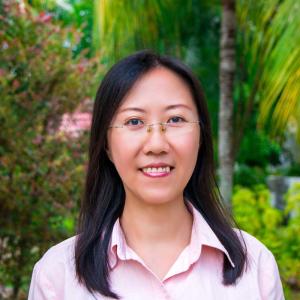
With the increased recognition of its nutritional benefits, demand for aquatic foods has been increasing. According to recent research, it is expected to double by 2050. However, anticipating where and how demand will grow, and what factors might impact aquatic food systems, will determine whether this demand is sustainably met.
This is why foresight and modeling are so important. Projecting various scenarios can give policymakers a glimpse into the future, allowing them to act pre-emptively to avoid issues such as food shortages, price hikes and environmental degradation.
In recent years, aquatic foods have become more integrated into the foresight models of the broader agriculture and land-use sectors, which have developed systems for anticipating future scenarios related to food production, consumption, trade and prices.
Developments in modeling tools, as well as increased data from developing countries dependent on aquatic foods offers the potential to also assess the future challenges, needs and opportunities on the horizon for aquatic food systems.
Going for Better than Business-as-Usual
In 2023, our team used AsiaFish, a partial economic equilibrium model, to analyze future scenarios for fish supply and demand in Bangladesh. Such modeling, which projects the impact of specific policy actions on relevant markets, can help inform effective policies to meet the nutrition and livelihood needs of the population.
Research compared business-as-usual aquatic food production to four alternative scenarios: (1) increased productivity of farmed tilapia, pangasius and rohu carp, (2) improvements in feed quality, (3) disease outbreaks in farmed shrimps and prawns, and (3) the impact of climate change.
We found that while production was expected to double by 2040 with business as usual, stronger results were associated with increased productivity of tilapia, pangasius and rohu, which are among the most commonly farmed species in Bangladesh. Productivity gains in these species would contribute to lower prices, making an important source of micronutrients more affordable, which is especially important for reducing hunger and malnutrition.
These findings indicate that policies geared toward accelerating the sustainable growth of aquaculture, combined with a nutrition-sensitive approach, will help tackle malnutrition in the country. Also, the findings informed the annual work plan for the Bangladesh Agricultural Research Council, under the Ministry of Agriculture.
Forward Planning for Nature
Foresight and economic modeling research can also anticipate the relationship between increased demand and supply, and subsequent environmental impact and sustainability.
We contributed to a novel integrated assessment framework, published in 2023. The first of its kind, the framework provides a tool to assess the impacts of growing demand for animal-sourced food on the local environment. We achieved this by linking a model of the global agricultural and food system, a landscape-level environmental impact assessment model and an ecosystem services simulation model.
The framework was initially applied to land-based animal-source foods in Tanzania. However, the findings demonstrated how food security gains from increased production could be set against the impact on natural ecosystems. This kind of assessment can help policymakers and decision-makers navigate trade-offs and identify sustainable best practices that deliver the best outcomes for people and the environment.
Preparing for a Changing World
Foresight modeling can also provide crosscutting insights into future scenarios of climate change, population growth, diets and policy shifts. These insights inform government decisions on how best to balance the needs of a growing population with increasingly limited natural resources.
Our recent modeling on fish and rice showed that demand for both commodities was expected to grow across Asia to 2050. This evidence supports the case for adopting integrated rice and fish farming systems to meet this rising demand while also improving the sustainability of both through a mutually beneficial production system.
We also found an expected increase in the consumption of other animal-source foods, pointing toward the Westernization of Asian diets. This valuable foresight helps anticipate the nutritional needs of a population and position aquatic foods as part of a healthy diet. These findings informed the discourse at the 2023 International Rice Congress.
Climate-Smart Aquaculture
Our forthcoming research includes focusing on how we can transition to a low-emission food system by assessing the future supply and demand for fish against socioeconomic and environmental impacts using the International Model for Policy Analysis of Agriculture Commodities and Trade (IMPACT) fish module. The insights will help determine changes to aquatic food production that can maximize the benefits for farmers and consumers.
Ongoing research will also use a revised AsiaFish modeling approach to investigate the implications of climate change impact on fisheries and aquaculture in Egypt, Africa’s largest producer of aquatic foods.
Better data and modeling about various aspects of aquatic food systems can better inform decision-making about investments and policies to drive improved nutrition, livelihoods and climate action.
